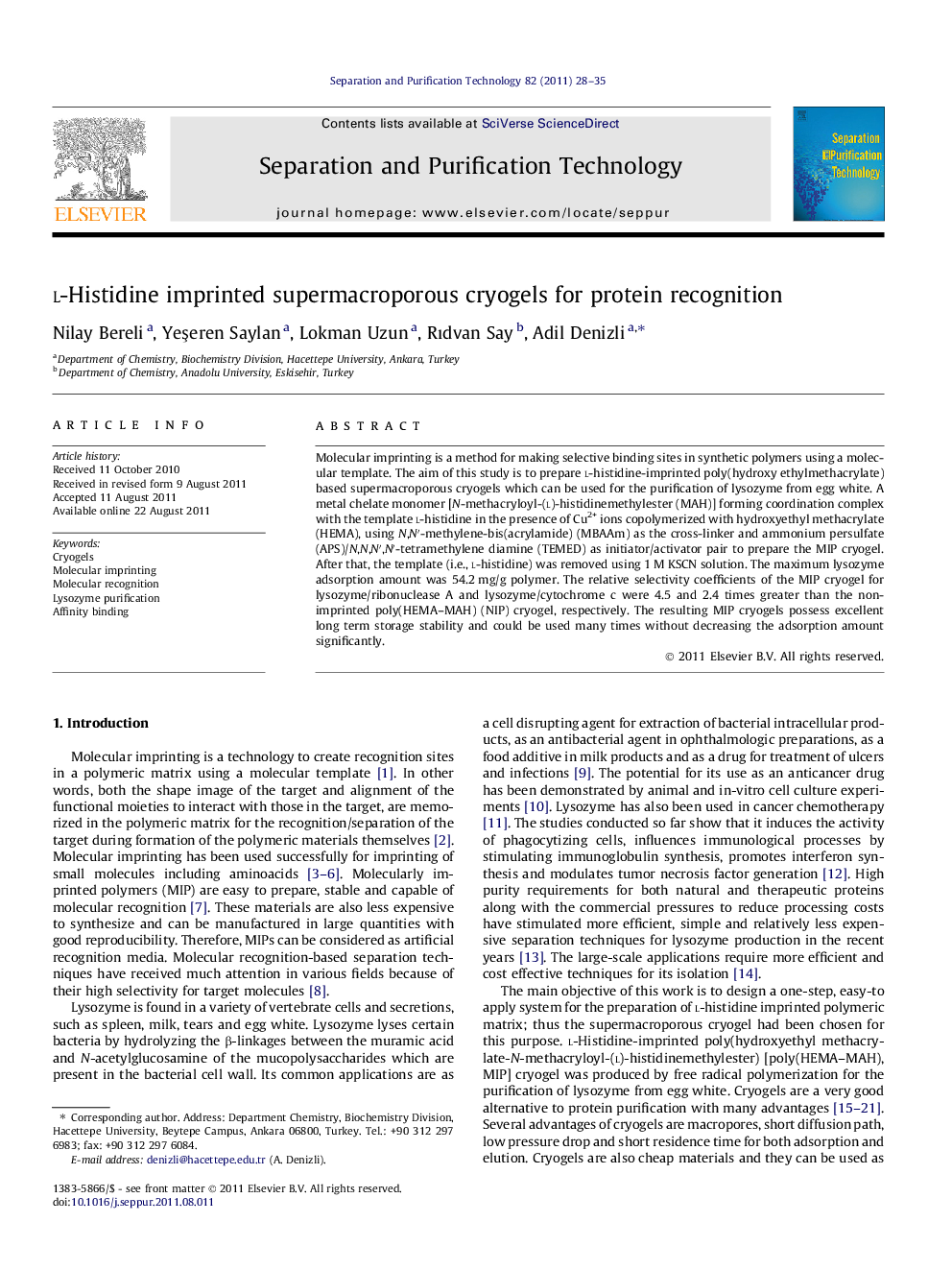| Article ID | Journal | Published Year | Pages | File Type |
|---|---|---|---|---|
| 642424 | Separation and Purification Technology | 2011 | 8 Pages |
Molecular imprinting is a method for making selective binding sites in synthetic polymers using a molecular template. The aim of this study is to prepare l-histidine-imprinted poly(hydroxy ethylmethacrylate) based supermacroporous cryogels which can be used for the purification of lysozyme from egg white. A metal chelate monomer [N-methacryloyl-(l)-histidinemethylester (MAH)] forming coordination complex with the template l-histidine in the presence of Cu2+ ions copolymerized with hydroxyethyl methacrylate (HEMA), using N,N′-methylene-bis(acrylamide) (MBAAm) as the cross-linker and ammonium persulfate (APS)/N,N,N′,N′-tetramethylene diamine (TEMED) as initiator/activator pair to prepare the MIP cryogel. After that, the template (i.e., l-histidine) was removed using 1 M KSCN solution. The maximum lysozyme adsorption amount was 54.2 mg/g polymer. The relative selectivity coefficients of the MIP cryogel for lysozyme/ribonuclease A and lysozyme/cytochrome c were 4.5 and 2.4 times greater than the non-imprinted poly(HEMA–MAH) (NIP) cryogel, respectively. The resulting MIP cryogels possess excellent long term storage stability and could be used many times without decreasing the adsorption amount significantly.
